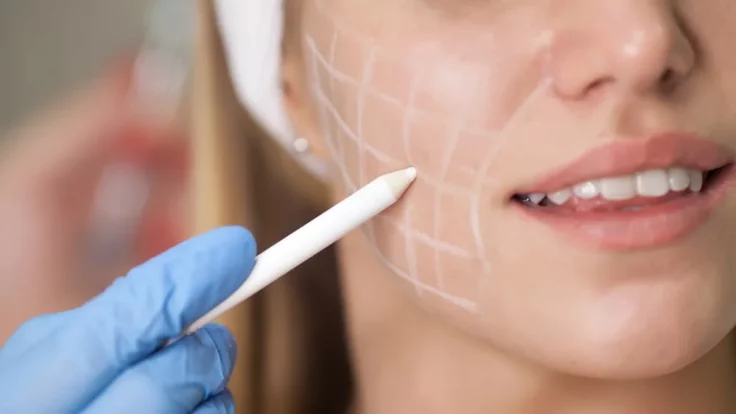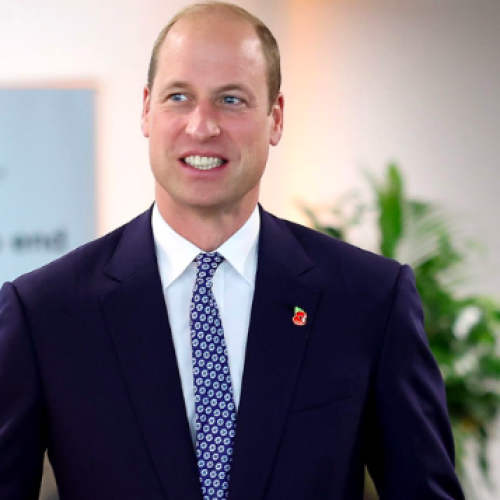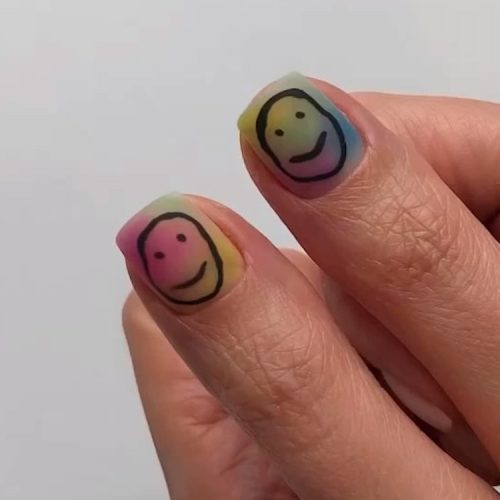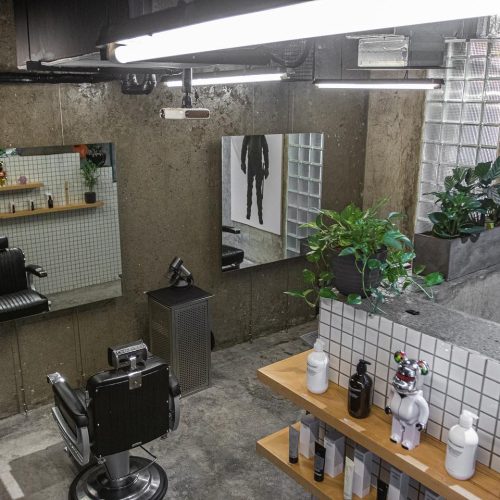Another day, another body part we need to obsess over. I’m talking about buccal fat, the walnut-shaped mass of volume in our cheeks responsible for baby faces. This week, there has been plenty of discourse on Twitter about the removal of buccal fat, thanks to Lea Michele’s new selfie in which her cheeks look noticeably more hollowed out than usual. “Jaw filler and buccal fat removal running through Hollywood like tomb raider this year my God,” commented one user on Michele’s selfie, gaining over 85,000 likes.
jaw filler and buccal fat removal running through hollywood like tomb raider this year my god https://t.co/LCsV7jfAVg
— carey (@brokebackstan) December 12, 2022
Unlike a lot of users, I have known about buccal fat removal for several years before it became the Internet topic of the week to hyper fixate on. I actually have considered getting it done myself after a close friend showed up from Turkey one day with sculpted, angular cheekbones that could cut glass. But, after doing some research, I decided not to undergo the procedure as we naturally lose some of the plumpness in our faces as we age, which means opting for the surgery will make me look even more sunken-in when I’m older.
Though it’s not new, buccal fat removal has gained more popularity amongst celebrities in recent years as we have seen a heightened interest in more defined cheeks. Indeed, contouring, the transformative sculpting technique that the Kardashians catapulted into the beauty zeitgeist during the 2010s, is an essential step in the everyday beauty routine of almost every girl who wears makeup. However, many women are now opting for permanent results a la cheek removal surgery so they can #wakeuplikethis instead of relying on makeup for a snatched look.
Add the obvious recent comeback of the “heroin chic” trend and return of Internet thin culture, this new obsession with hollow cheeks seems like an intentional part of the movement.
However, not everyone is a fan of getting your cheeks surgically removed and have taken to social media to express their thoughts on our increasingly changing beauty standards. “What the fuck is buccal fat how are they still inventing new flaws for us,” wrote music supervisor and writer Jules Zucker on Twitter. “I am literally running out of limbs and features.”
my excessive buccal fat may be unchic at the moment but the tables will turn once we’re all in our 60s and I’m the only bitch in town who looks jolly
— rayne fisher-quann (@raynefq) December 13, 2022
Writer Imogen West-Knights wrote: “This whole cheek removal thing is so stupid because in nine months time there’ll be a TikTok girlie who invents chipmunk core or cherub mode or some shit.”
Personally, I’m all for women embracing their natural beauty and not succumbing to the unbearable pressure of the industry’s current beauty standards that constantly make us feel like our body parts are a trend. That said, I am also for women doing whatever they want with their bodies as long as it makes them feel good about themselves. So, below, a quick guide on everything you need to know about buccal fat removal for those considering it.
What is buccal fat?
Buccal fat is a naturally-occurring mass of volume that is situated between your cheekbones and your jawbone. Everyone has buccal fat, but the size varies from one person to another depending on a range of factors, such as genetics and weight. Buccal fat naturally diminishes as we age, which means that our cheeks tend to hollow out by themselves over time.
Why do people remove it?
There’s nothing wrong with having plump, rounded cheeks but many people who want to reduce the width of their face or achieve sharp, angular supermodel-worthy cheekbones opt to remove their buccal fat via surgery.
How is buccal fat removed?
Also known as a buccal lipectomy or cheek reduction surgery, the procedure involves making a small incision in the inside of the mouth on both sides to expose then cut the fat pads. The surgeon will then close the incisions with sutures, which will dissolve within a few days.
How long does the procedure take?
The procedure takes approximately one-hour, and patients are able to go home immediately after.
What can you expect after the surgery?
Following the surgery, you will be given a special oral rinse to prevent infection and also be put on a liquid diet for a few days, before you are able to re-introduce solid foods into your diet. You can also expect some swelling and bruising, which will diminish as you heal.
Are there any potential risks?
Some risks associated with buccal fat removal include infection at the incision site, injury to the facial nerves, numbness or sensation changes, and asymmetry. Much like any other plastic surgery, it’s important to weigh the risks and the potential benefits of having the procedure, and seek out a board-certified healthcare provider who can provide you with all the information you need and discuss the potential risks with you so that you can make an informed decision.
When do you see results?
Full recovery usually takes about three weeks, but it takes several months for your cheeks to settle into their new shape.
Who is a good candidate for the surgery?
People who don’t like their round and full cheeks may opt for the procedure. However, if you have a narrow face or you’re in your early 20s, you may regret the surgery in a decade or so when your facial fat naturally starts to lessen and causes a prematurely older look.
Is the surgery reversible?
Buccal fat removal is a permanent procedure. In the event that you feel too much fat has been removed leading to a gaunt or caved in look, your best option is fat grafting, which sees fat cells from another part of your body being injected back into your buccal cheek area.
How much does the procedure cost?
The surgery costs between $5,000 and $20,000 depending on the doctor, the type of anesthesia used, and the city in which you have the procedure done.









